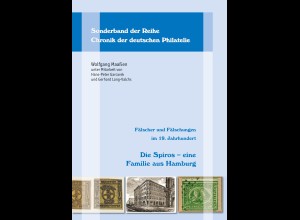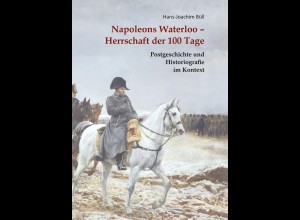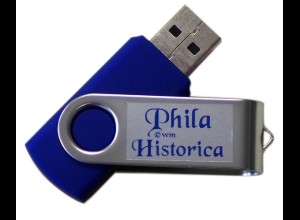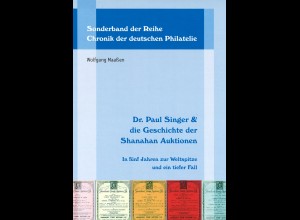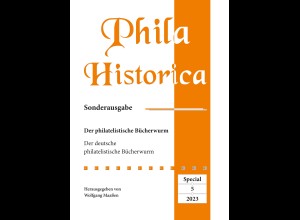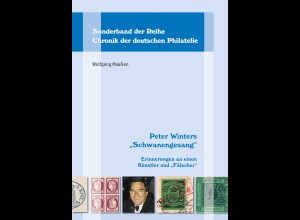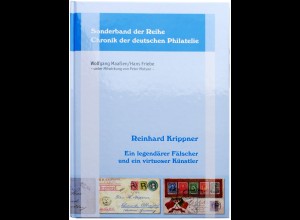- philatelistische Literatur
- Philateliegeschichte
Heft 13 der Schriftenreihe des Consilium Philatelicum, 56 Seiten, zahlr. Abb., in Farbe, kart., gut erhalten. Ex Bibliothek Dr. Heinz Jaeger ,
| Erhaltung | siehe Beschreibung |
| Prüfung | siehe Beschreibung |
| Zur Geschichte der deutsch-polnischen Beziehungen in der organ. Philatelie | |
|---|---|
| Erhaltung | siehe Beschreibung |
| Prüfung | siehe Beschreibung |
Heft 14 der Schriftenreihe des Consilium Philatelicum, 67 Seiten, zahlr. Abb., in Farbe, kart., gut erhalten. Ex Bibliothek Dr. Heinz Jaeger ,
| Erhaltung | siehe Beschreibung |
| Prüfung | siehe Beschreibung |
| Maassen/Fischer: Die IPHLA 2012 in Mainz. Ein Rückblick | |
|---|---|
| Erhaltung | siehe Beschreibung |
| Prüfung | siehe Beschreibung |
32 Seiten, zahlr. Abb., in Farbe, kart., gut erhalten. Ex Bibliothek Dr. Heinz Jaeger ,
| Erhaltung | siehe Beschreibung |
| Prüfung | siehe Beschreibung |
| Maassen: Das Haus der Philatelie und Postgeschichte in Bonn (ca. 1998) | |
|---|---|
| Erhaltung | siehe Beschreibung |
| Prüfung | siehe Beschreibung |
"Memories of an artist and "forger" More than the confessions of an impostor - A book about the life and work of the legendary stamp forger Peter Winter Size A4, hardcover with thread sewing, color printing, 200 pages, 280 illustrations, 35 of them in b/w, 1080 g, © Schwalmtal 2021, special issue no 17 of the series "Chronicle of German Philately" About the content: He was called the 'Kujau of philately', the last great forger after Jean de Sperati, a 'Till Eugenspiegel', a prankster, but also - according to others - a swindler or an impostor. Perhaps he was a bit of everything? After reading this new book by the well-known philatelic historian Wolfgang Maassen, you will be wiser. On a total of 100 large-format pages, the author traces the life and companies of the former opera singer from Bremen. He describes his origins and career, which, in addition to a quite noteworthy career as a singer worldwide, also included a hitherto little-known doctorate, but then points out his second career in philately, which had its beginnings in Bremen in the early 1970s. This was followed by the setting-up of a company called “Bruyere” there, a wine shop that also sold stamp replicas. Such ventures were expanded a few years later with the companies ProPhil Forum and the House of Stamps in Switzerland. By then, Peter Winter had long been attending the stamp fair in Essen with his own stand. The author devotes quite a lot of time to individual stories: the Heiner Faber case, the copyright dispute with the British Library in England, Winter's fantasy stamps, but also the 'coup' with the 1c British Guiana and the rare “Inverted Jenny”. Equally worth reading is the role played by philatelic societies at the time and Winter's dream of a documentation of his life's work. This did not come about, but this book did, in which the author, who had known Winter well for 20 years and was in constant contact with him, has portrayed Winter. He has also documented his work on about 100 additional pages, some of them with large colour enlargements. This documentation was only possible because international and German philatelists worked together and, in many cases, provided the author with previously unknown material and originals. Leonard Hartmann from the USA and the former auctioneers Wolfgang Jakubek and Hans-Joachim Schwanke were also involved. Jan Billion, publisher of the “Deutsche Briefmarken-Revue”, also opened his archives and, last but not least, Carl Walske † and Dr. Bohne †, whose archival material found its way to the author via Leonard Hartmann. The book is exciting and well worth reading. It is as entertaining as a novel and quite enjoyable in quite a few places. Peter Winter fooled everyone and not infrequently made fun of them. He played a joke on many, was a fun-loving character, but could also be vindictive. He will keep his place in the history of philately, which would hardly have been conceivable without this biography and documentation of his life's work.
| Erhaltung | Neu |
| Prüfung | siehe Beschreibung |
| Maaßen, Wolfgang: Peter Winter's "Swan Song" | |
|---|---|
| Erhaltung | Neu |
| Prüfung | siehe Beschreibung |
Eine Geschichte von Dichtung und Wahrheit Wolfgang Maaßen: Fälscher und Fälschungen im 19. Jahrhundert. Die Spiros – eine Familie aus Hamburg Corona hatte so wie vieles andere auch das Erscheinen dieses Buches verzögert. Nun liegt der erste Teilband mit 255 Seiten in Farbe vor. Der Untertitel „Eine Geschichte von Dichtung und Wahrheit“ lässt bereits anklingen, dass auch diese Forschungsarbeit des bekannten Philateliehistorikers relevant Neues zu präsentieren vermag. Den Namen der „Gebr. Spiro“ oder gar „Philip Spiro“ dürfte wohl jedem fortgeschrittenen (Berufs-)Philatelisten geläufig sein. Diesen Urhebern in Hamburg wird seit mehr als 150 Jahren die Produktion und Verbreitung der ersten frühen Imitate von Briefmarken aus zahllosen Ländern zugeschrieben. Mehr als 150 verschiedene sollen es sein, die in riesiger Zahl weltweit vermarktet wurden und heute immer wieder noch in zahlreichen Sammlungen und Alben zu entdecken sind. Man nannte sie zuerst „Faksimiles“. Seit langem werden sie aber als Fälschungen eingestuft, auch wenn sie ursprünglich wohl nur als Lückenfüller für Anfänger und Schüleralben gedacht waren. Der Autor lässt den Leser in die frühen Jahre der beginnenden Philatelie nach 1860 eintauchen. Er beschreibt das Auftauchen der ersten Fälschungen und deren Resonanz in den (zuweilen heute meist kaum noch bekannten) Gazetten der damaligen Zeit. Allein diese Literaturstudie ist bereits spannend, erfährt man doch vieles, was man bislang nie irgendwo anders nachlesen konnte. Mit Unterstützung von Hans-Peter Garcarek und Gerhard Lang-Valchs gelingt Maaßen der Nachweis, dass die Familie Spiro eben nicht die Hersteller dieser Faksimiles waren, wenngleich die Gebr. Spiro (nicht Philip Spiro!) wohl für einige Jahre damit gehandelt haben. Aber bei weitem nicht so lange, wie es bis heute immer wiederkehrend behauptet wird. Ursächlich für die Produktion waren andere, sowohl in England wie auch in Deutschland. Allein die familiengeschichtliche Recherche und Dokumentation der Primärquellen, zusammengetragen aus dem Hamburger Staatsarchiv, ist eine eindrucksvolle Innovation, die die bisherigen „Schuldzuweisungen“ zahlloser Autoren als Märchen und Legenden enttarnt. Im zweiten Teil des Buches liegt dann der Fokus auf den Faksimiles selbst, die der Autor vorsichtig und zurückhaltend nur noch als „sog. Spiros“ bezeichnet. Farben, Zähnung, Papier, Druckverfahren und Stempel werden näher unter die Lupe genommen und analysiert. So manches Überraschende kommt auch da zu Tage. Selbst Vorlagen, die bislang noch in keiner anderen Publikation zu sehen waren. Last but not least bietet das Buch erstmalig auch die komplette Wiedergabe der in den legendären „Spud Papers“ den Gebr. Spiro fälschlich zugeschriebenen Faksimiles. In schwarzweiß waren diese bereits bekannt, einige wenige Glückliche hatten auch ein Original der seltenen Fachzeitschrift „The Philatelist“ aus den 1870er-Jahren, in denen die Folgen dieser Artikelserie erschienen waren. Aber es gab deutlich mehr als im „The Philatelist“ – und auch dies, was überall fehlt, wird hier abgebildet. Die Schlussfrage nach einem „geschlossenen Buch“ beantwortet der Autor – auch mit Hinweis auf einen umfangreichen Teilband 2, der noch 2023 folgen soll – nur mit Vorsicht. Es sei eben kein „geschlossenes Buch“, sondern der Beginn eines Projektes, der im Rahmen des Wenigen, was erhalten geblieben ist, noch mehr Licht ins Dunkle bringen will. Dieser Band 2 soll alle bis dahin dem Autor vorgelegten Faksimiles-Bogen (ca. 1.300!!!) der angeblichen Spiro-Imitate enthalten bzw. vergleichen. Man darf gespannt sein auf das Ergebnis. Sicher ist, dass bereits dieser erste Teilband die Forschung revolutioniert. Das Buch erscheint im Februar 2022 als Sonderband 18 der Reihe „Chronik der deutschen Philatelie“. Es wird in ca. zwei Monaten auch in einer um zwei Anhänge gekürzten Fassung in englischer Sprache vorliegen. Format DIN A4, 255 + 1 Seiten, mehr als 490 Abb. in s/w und Farbe, Hardcover mit Fadenheftung, in deutscher Sprache, VP: 45 Euro zzgl. Paketporto. © Phil*Creativ GmbH 2022, 1260 g
| Erhaltung | Neu |
| Prüfung | siehe Beschreibung |
| Wolfgang Maaßen: Die Spiros – eine Familie aus Hamburg | |
|---|---|
| Erhaltung | Neu |
| Prüfung | siehe Beschreibung |
Heft 12 der Schriftenreihe des Consilium Philatelicum, 72 Seiten, zahlr. Abb., in Farbe, kart., gut erhalten. Ex Bibliothek Dr. Heinz Jaeger ,
| Erhaltung | siehe Beschreibung |
| Prüfung | siehe Beschreibung |
| IBRA 09 / NAPOSTA 09 / 19. IBM Essen (2009) | |
|---|---|
| Erhaltung | siehe Beschreibung |
| Prüfung | siehe Beschreibung |
Von den Anfängen der Postwertzeichen zum ersten deutschen Sammlerverband. Sonderband aus der Reihe "Chronik der deutschen Philatelie". Ein mit 628 Seiten monumentaler philateliehistorischer Band dieser bekannten Buchreihe. Zahllose SW-Abb., Leinen-Hardcover mit Titel-Silberprägung und Schutzumschlag. Gut erhalten, nur minimale Patina auf Umschlag und Vorsatzseite.
| Erhaltung | siehe Beschreibung |
| Prüfung | siehe Beschreibung |
| Wolfgang Maaßen: Philatelie und Vereine im 19. Jahrhundert (ca. 2005) | |
|---|---|
| Erhaltung | siehe Beschreibung |
| Prüfung | siehe Beschreibung |
Köln 1983, 60 Seiten, zahlr. Abb., broschiert, gut erhalten.
| Erhaltung | siehe Beschreibung |
| Prüfung | siehe Beschreibung |
| Arno Köth/C. Springer: Dr. phil. Alfred Moschkau - Ein Leben für die Philatelie | |
|---|---|
| Erhaltung | siehe Beschreibung |
| Prüfung | siehe Beschreibung |
Band 1 der Spiro-„Fälschungs-Dokumentation“ von Wolfgang Maassen ist erschienen! (English Text see below) Bereits im Januar 2023 war das Buch von Wolfgang Maaßen zu Fälschern und Fälschungen im 19. Jahrhundert unter dem Titel „Die Spiros – eine Familie aus Hamburg. Eine Geschichte von Dichtung und Wahrheit“ im Phil*Creativ Verlag in Schwalmtal erschienen. Damals kündigte der Autor eine in ihrer Art einmalige Dokumentation von erhalten gebliebenen vollständigen Faksimiles-Bogen an, die nach Erdteilen geordnet in verschiedenen Einzelbänden Niederschlag finden soll. Unterstützt wurde er dabei einerseits durch zahlreiche namhafte Philatelisten aus aller Welt, die solche Bögen ihr eigen nennen, in besonderer Weise aber durch das Prüfarchiv der Royal Philatelic Society London. Insgesamt kamen so nahezu 2.000 meist hochauflösende Farb-Scans zusammen, darunter eine Fülle von Material, das „die Welt noch nicht gesehen hat“! In dem zum 117. Deutschen Philatelistentag in Bautzen am 29. September 2023 im Rahmen einer Buchpräsentation des Consilium Philatelicum vorgestellten Band 1 der Dokumentation sind dem Autor bekannte Bogenexemplare der altdeutschen Staaten auf 272 (!) Seiten dokumentiert und in Farbe abgebildet. Jeweils mit kurzen Angaben in deutscher sowie englischer Sprache zu den Ausgaben, zu Unterschieden und Gemeinsamkeiten. Enthalten sind in diesem Band Abbildungen von Faksimiles-Bogen von Baden, Bayern, Bergedorf, Bremen, Braunschweig, Hamburg, Hamburg (Botenpost), Hannover, Helgoland, Lübeck, Mecklenburg-Schwerin, Sachsen und Thurn und Taxis. Mit dieser Dokumentation schließt sich eine Lücke in der philatelistischen Forschung, die mangels Material seit mehr als 150 Jahren bestand, nun aber für Experten und Prüfer eine gute Basis zur weiteren Forschung sein dürfte. Kurzinfo: Titel: „Spiro-Faksimiles“. Eine Dokumentation. Band 1 (Deutschland) = Band 19.1 der Buchreihe „Chronik der deutschen Philatelie“. Format DIN A4, 272 Seiten, 272 Farbabbildungen, Hardcover, VP: 56 Euro (zzgl. Porto). Der Band 2 dieser Dokumentation (Die „Amerikas“) erscheint voraussichtlich zum Jahreswechsel. Volume 1 of the Spiro "Forgery Documentation" has been published! Already in January 2023, the book by Wolfgang Maaßen on counterfeiters and forgeries in the 19th century was published under the title "Die Spiros - eine Familie aus Hamburg. A story of poetry and truth" was published by Phil*Creativ Verlag in Schwalmtal. At that time, the author announced a unique documentation of preserved complete facsimile sheets, which should find expression in various individual volumes, arranged according to continents. He was supported on the one hand by numerous renowned philatelists from all over the world who call such sheets their own, but in a special way by the expert archives of the Royal Philatelic Society London. In total, almost 2,000 mostly high-resolution color scans were collected, including a wealth of material that "the world has not yet seen"! In the volume 1 of the documentation presented on the occasion of the 117th German Philatelists' Day in Bautzen on 29 September 2023 in the context of a book presentation of the Consilium Philatelicum, sheet specimens of the old German states known to the author are documented on 272 (!) pages and illustrated in color. Each with short information in German as well as English language about the issues, differences and similarities. Included in this volume are illustrations of facsimile sheets of Baden, Bavaria, Bergedorf, Bremen, Brunswick, Hamburg, Hamburg (Botenpost), Hanover, Helgoland, Lübeck, Mecklenburg-Schwerin, Saxony and Thurn und Taxis. This documentation closes a gap in philatelic research that existed for more than 150 years due to lack of material, but now should be a good basis for further research for experts and examiners. Short info: Title: "Spiro-Faksimiles". A Documentation. Part 1 (Germany) = Volume 19.1 of the book series "Chronik der deutschen Philatelie". Format DIN A4, 272 pages, 272 color illustrations, hardcover, VP: 56 Euro (plus postage). Part 2 of this documentation (The "Americas") is expected to be published at the turn of the year.
| Erhaltung | Neu |
| Prüfung | siehe Beschreibung |
| Spiro-Faksimiles Teil 1/Spiro-Facsimiles Part 1 | |
|---|---|
| Erhaltung | Neu |
| Prüfung | siehe Beschreibung |
Postgeschichte und Historiografie im Kontext Bereits der Untertitel „Postgeschichte und Historiografie im Kontext“ macht deutlich, dass es sich bei diesem Werk um ein sehr ungewöhnliches Buch handelt. Davon legt auch das Vorwort von Klaus Weis, dem Präsidenten des Deutschen Altbriefsammler-Vereins, beredtes Zeugnis ab, wenn dieser schreibt: „Ich durfte Hans-Joachim Büll als einen Postgeschichtler kennenlernen, der sich mit seinen Forschungsarbeiten Themen widmet, an die sich nicht viele trauen. Diese Herausforderungen reichen teilweise bis zur Botenpost im Mittelalter zurück und das damit einhergehende, intensive Quellenstudium inklusive der oftmals unerlässlichen Archivarbeit ist sicherlich kein Fremdwort für diesen Experten. Zu einem seiner Spezialgebiete präsentiert Hans-Joachim Büll nunmehr eine mehrere 100 Seiten umfassende Publikation mit einer komplexen Aufarbeitung der napoleonischen Ära vor dem Hintergrund postgeschichtlicher Relevanzen. (Alt-)Briefe sind Zeitzeugen — das wird in diesem Werk in anschaulicher Weise dargestellt. Der enge Zusammenhang zwischen Postgeschichte und Zeitgeschichte verdeutlicht insbesondere durch die Berücksichtigung von Briefinhalten interessante und individuelle Facetten der seinerzeitigen Geschehnisse, deren Folgen das Staatengebilde in Europa neu ordnete. Der Zugang zu den Sammlungen prominenter Postgeschichtler begünstigt hilfreiche Illustrationen und die professionelle Umsetzung erleichtert auch für Philatelisten, welche bis dato keine Affinität zur napoleonischen Zeit entwickeln konnten, den leichten Einstieg.“ So sind 400 Seiten entstanden, auf denen Büll den Bogen weit spannt, nämlich die Entwicklungen aufzeigt, die seit den Zeiten derer von Thurn und Taxis den direkten Zusammenhang von Macht, Vorherrschaft und postalischer Dominanz prägten. Frankreichs Annexion der Österreichischen Niederlande, Holland in den Händen Frankreichs und die französische Herrschaft links des Rheines werden akribisch in ihren konkreten Auswirkungen auf den Postverkehr beschrieben. Nachfolgend die Auseinandersetzungen zwischen Preußen und Napoleon, der Diktatfrieden von Tilsit sowie das Großherzogtum Berg und die Hanseatischen Départéments und deren Folgen für den grenzüberschreitenden Postverkehr sind Kapitel gewidmet. Weitere – das versteht sich von selbst – dem Zusammenbruch des napoleonischen Imperiums 1812–1814, der 100-Tage-Herrschaft des französischen Kaisers 1815, der die Alliierte Besetzung Frankreichs bis 1818 sich anschloss. Auch solche Themen werden gründlich und zeitgeschichtlich spannend zu lesen aufgearbeitet, aber jeweils mit Blick auch auf Post, Zensur und Veränderungen im Postwesen. Dies zeigen auch die letzten drei Kapitel in beeindruckender Weise, die von der Thurn und Taxis-Interimszeit im Rheinland 1814–1816, der Preußischen Post im Rheinland und von den Niederländischen Postverbindungen 1814–1815 handeln. Anders als zahlreiche frühere Autoren behandelt Büll all diese Aspekte nie losgelöst von ihrem politisch-zeitgeschichtlichen Umfeld, was dem Buch nahezu ein Alleinstellungsmerkmal verleiht. Beeindruckend ist die immense Zahl der farbigen Belegabbildungen, die jeweils detailliert mit hoher Kompetenz beschrieben sind und aus den Kollektionen auch anderer namhafter Experten stammen. Wurde der Autor für seine herausragende postgeschichtliche Arbeit schon vor mehr als 30 Jahren mit der bedeutenden SAVO-Medaille geehrt, so kann man heute mit Fug und Recht einmal mehr feststellen, dass er diese und vielleicht auch weitere Ehrungen verdient hat. Das Buch ist der lesenswerte Beweis. 400 Seiten, 560 Fotos und Abbildungen, Hardcover, komplett in Farbe, ISBN 978-3-949591-05-1
| Erhaltung | Neu |
| Prüfung | siehe Beschreibung |
| Hans-Joachim Büll: Napoleons Waterloo – Herrschaft der 100 Tage | |
|---|---|
| Erhaltung | Neu |
| Prüfung | siehe Beschreibung |
Für alle, die die eine oder andere Ausgabe der Online-Zeitschrift Phila Historica verpasst haben oder erst im Laufe der Zeit eingestiegen sind, haben wir diesen USB-Stick zusammengestellt. Er enthält alle Ausgaben der Online-Zeitschrift Phila Historica von 1/2013 bis 4/2023, also alle 10 bisher erschienenen Jahrgänge. Außerdem gibet es dazu die Sonderbände „Die Borromeo.Bibliothek“ und „Die Seebeck-Marken, ihre verschiedenen Druckauflagen und Neudrucke“ sowie das Phila Historica-WM-Bildarchiv, Teil 1 und 2.
| Erhaltung | Neu |
| Phila Historica USB-Stick, Version 2023 | |
|---|---|
| Erhaltung | Neu |
In fünf Jahren zur Weltspitze und ein tiefer Fall (P*C) Aus dem Nichts tauchte im Februar 1954 ein „Nobody“ namens Dr. Paul Singer in einem kleinen Vorort Dublins, Dun Laoghaire, auf. Er machte aus der kleinen Möbel- und Nachlass-Auktionsfirma Shanahan das weltgrößte Briefmarken-Auktionshaus. Geradezu magisch zog Singer zehntausende Kunden aus aller Welt an. Denn er bot Investitionsmöglichkeiten, wie jeder innerhalb kürzester Zeit sein in Briefmarken angelegtes Geld beachtlich vermehren konnte. So flossen Millionen Britische Pfund der Firma zu, die diese wiederum erfolgreich investierte. Singer sicherte Investoren und Käufer scheinbar gegen nahezu jedes Risiko ab. Man konnte nur gewinnen – glaubte man – und investierte weiter. Mit der ersten „Millionärs“-Auktion im November 1958 war er kurz vor dem Ziel. Die Gazetten der Welt berichteten über seine Auktion und eine legendäre Party, bei der 200 Flaschen besten Champagners die 200 oder mehr Gäste erfreuten, ebenso wie der in Russland bestellte Kaviar oder die aus Paris eingeflogenen „Damen der Nacht“. Anfang Mai 1959 wurden Singer & Shanahan zum Gipfelstürmer: Es gelang Singer, die weltgrößte Briefmarkensammlung des Tabak-Tycoons Maurice Burrus zu erwerben. Der Erfolg schien nicht mehr zu stoppen. Bis in der Nacht vom 8./9. Mai ein mysteriöser Einbruch dieses Erfolgsmärchen abrupt beendete: Die Verkaufsware der angekündigten „Mystery-Collection“, einer einmaligen riesigen Sammlung von Lombardei-Venetien, wurde gestohlen, die Auktion zur 5-Jahr-Feier des Unternehmens abgesagt. Es folgten die längsten und teuersten Untersuchungen und Prozesse in der Geschichte Irlands. Mit einem höchst ungewöhnlichen Verlauf … Diese spannende und in ihrer Form wohl einmalige Geschichte wird in dem neuen 187-Seiten-Hardcoverbuch in gebotener Ausführlichkeit dokumentiert, wobei der Autor – ein bekannter Philateliehistoriker – dabei auch bisher völlig unbekannte Informationen, z.B. zur Herkunft der Singerfamilie, mit einbringt. Ebenso ungewöhnlich ist eine vollständige Bibliografie aller Kataloge des damaligen Auktionshauses, denn heute sind meist nur die letzten, nicht aber die ersten bekannt. Darunter befindet sich sogar der nie versandte Auktionskatalog zur geplanten 2. Burrus-Auktion vom 13. Juni 1959, einer Auktion, die nie stattfand und deren Kataloge fast restlos vernichtet wurden. Selbst der letzte noch lebende Zeitzeuge, ein früherer Mitarbeiter der Firma Shanahan, Sydney Glass, wurde vom Autor zum Interview gebeten und seine überraschenden Ansichten finden sich ebenfalls in diesem Buch wieder wie so viele andere bis heute nie vollständig geklärte Angaben, die in diesem Werk eingehende Behandlung und vielfach auch Richtigstellung erfahren. Es ist – nicht nur wegen seiner Zahl beeindruckender Illustrationen – ein unterhaltsames Buch, fast schon ein Krimi, der aufzeigt, was passieren kann, wenn Auktionatoren den „Pfad der Tugend“ verlassen. Format DIN A4, 187 Seiten, in Farbe, Festeinband. Erschienen als Sonderband 15 in der Reihe „Chronik der deutschen Philatelie“ 2019.
| Erhaltung | Neu |
| Prüfung | siehe Beschreibung |
| Maaßen, Wolfgang: Dr. Paul Singer und die Geschichte der Shanahan-Auktionen | |
|---|---|
| Erhaltung | Neu |
| Prüfung | siehe Beschreibung |
Nachdruck der Zeitschriften „Der philatelistische Bücherwurm“ und „Der deutsche philatelistische Bücherwurm“ 1921–1929 sowie 1931–1937, PHILA HISTORICA-Sonderband Nr. 5, 543 Seiten, schwarz/weiß, Hardcover mit Fadenbindung. Verkaufspreis: 56 Euro zzgl. Paketporto. „Das Blatt ist für Bibliophile von unschätzbarem Wert …!“ Dies behauptete die „Donaupost“, nachdem sie 1921 die erste Ausgabe einer neuen Zeitschrift für Literatursammler und Literaturinteressenten erhalten hatte. Es handelte sich um den „Philatelistischen Bücherwurm“, der von Alexander Bungerz und Carl Beck redaktionell betreut und geführt wurde. Beide waren langjährig bestens ausgewiesene Literaturkenner, Autoren und Experten und sie folgten mit diesem neuen Blatt dem Vorbild des Journals der „Philatelic Literature Society“ in Großbritannien, das von 1908–1918 erschienen war. Immerhin gut zehn Jahre lang. Auf dieses Bestehensalter brachte es der „Bücherwurm“ zwar nicht, – er ging mit der Nummer 2 vom März 1929 nahezu still und sanft ein (Carl Beck war schwer erkrankt und starb am 9. Juli 1929 in Berlin, sein Freund und Mitstreiter Alexander Bungerz war ebenfalls langjährig erkrankt und ab 1928 erwerbs- und mittellos). Auch mit dem Umfang und der Dichte des Inhalts des englischen Journals konnte man nicht mithalten, denn dieses hatte es insgesamt bis fast auf 1.000 Seiten gebracht, der „Bücherwurm“ bis 1929 nur auf 269. Und dennoch: Die Philatelie verdankt dem „Bücherwurm“ viel, denn dieser war zu wahrlich schweren Zeiten (Nachkriegszeit Erster Weltkrieg, Inflation) das einzige Blatt, das dem an Literatur interessierten Sammler Neues bot. Zu Neuerscheinungen, zu Ausstellungen, zu Autoren und Verlegern, zu Fragen des Literatursammelns und vieles andere mehr. Max Tons umfangreiche Bibliografie („Katalog und Handbuch der deutschsprachigen philatelistischen und postgeschichtlichen Literatur“ war zuletzt 1914 erschienen, es galt also, Lücken zu schließen, bevor diese noch größer wurden. Dies mochten sich auch nach dem Tod von Beck und Bungerz andere literaturnahe Philatelisten gesagt haben und so kam ein zweites Projekt zustande. Ab März 1931 erschien „Der deutsche philatelistische Bücherwurm“, der sich durchaus als Nachfolgeorgan verstand, zählte es doch diesen Jahrgang (als elften) fort. J. A. (Julius Alexander) Bosshard und Fritz Seifert waren die neuen Herausgeber, wobei die professionelle „Handschrift“ Seiferts dem neuen Blatt guttat: er war Inhaber einer Druckerei und ein großer Freund der philatelistischen Literatur. Und so erschien nun der „Bücherwurm“ in ansehnlich gestaltetem Schriftsatz und nicht mehr als vervielfältigtes mit einer Schreibmaschine verfasstes Manuskript. Bosshard/Seifert betonten in ihrem ersten Vorwort („Was wir wollen!“) vom April 1930, es fehle eben doch an einem Nachrichtenblatt, das den Philatelisten die Neuerscheinungen auf dem Büchermarkte unterrichtet, aber auch eine sachliche Kritik über das Schaffen der einzelnen Autoren bringt. Diesen Anspruch lösten beide gemeinsam als Verleger und Schriftleiter bis Februar 1933 ein, ab April 1933 trat dann nur noch Fritz Seifert in diesen Positionen an. Eine Erklärung wurde im Blatt dazu nicht veröffentlicht. Sie dürfte aber in Bosshards hauptberuflicher Tätigkeit zu finden sein, denn der gebürtige Schweizer Gerichtschemiker (geb. am 20. September 1894 in Zürich, gest. am 18. Februar 1963 in Küsnacht, Kanton Zürich/CH) kehrte 1932 von Meiningen aus in seine Heimat zurück. Seifert gelang es, das Blatt trotz der schwierigen Jahre der Weltwirtschaftskrise zu halten und sogar auszubauen. Allerdings verflachte der Inhalt ab 1936 zunehmend mehr, die Folgen des (verbands-)politischen Gerangels um die Vormachtstellung in den Verbänden, die damit verbundene Gleichschaltung der philatelistischen Presse und die Auflösung alter Verbände zugunsten neuer NS-affiner, wurden sichtbar. Fritz Seifert zeichnete im Dezember 1937 (17. Jahrgang) letztmalig als Verleger und Schriftleiter und teilte mit, dass mit dieser Nummer die Zeitschrift eingestellt wird. Es mag wohl noch einen 18. Jahrgang gegeben haben (nunmehr statt des bisherigen Untertitels „Zeitschrift für philatelistische Literatursammler“ neu „Fachzeitschrift für Sammler und Freunde philatelistischer Literatur“), aber bei den drei Nummern, die mir von Oktober bis Dezember 1938 vorliegen, wird als Verlagsanschrift Berlin genannt und Fritz Seifert in Leipzig nicht mehr aufgeführt. Die enthaltenen Inhalte haben überwiegend nichts mehr mit philatelistischer Literatur zu tun. Als Herausgeber war es mir immer wichtig, Seltenes, Nützliches, für viele kaum Erreichbares zugänglich zu machen. Deshalb publizierten wir 2019 einen Reprint des Journals der Philatelic Literature Society in zwei Bänden, denn von den vielleicht einmal gedruckten 100 Exemplaren der Originale dürften kaum eine nennenswerte Zahl kompletter Sets überlebt haben. Vergleichbares gilt für den „(Deutschen) Philatelistischen Bücherwurm“. Auch dieser ist vollständig sehr selten. Meist kursieren nur einzelne Ausgaben, selbst in Bibliotheken sind komplette „Runs“ der ersten und der neuen Nachfolgezeitschrift kaum vorhanden. Der zufällige Erwerb sehr sauberer ungebundener Xeroxkopien nahezu vollständiger Jahrgänge dieser Zeitschriften ließ den Gedanken eines Reprints in digital gedruckter Kleinauflage reifen. Einige fehlende Seiten konnte ich aus eigenem Kopienbestand ergänzen, so dass wir in dem PHILA HISTORICA-Sonderband Nr. 5 mit dem Reprint der ursprünglich erschienenen 543 Seiten diese Zeitschriften bis Ende 1937 anbieten. Einige technische Mängel bitte sind zu entschuldigen (z.B. korrekter Seitenstand, der nicht bei allen Kopien gegeben war). Der Nutzung steht damit aber nichts im Wege. Und ein Nachdruck kann letztlich auch nur so gut sein, wie es das Original war. Wolfgang Maassen
| Erhaltung | Neu |
| Prüfung | siehe Beschreibung |
| Der (deutsche) philatelistische Bücherwurm | |
|---|---|
| Erhaltung | Neu |
| Prüfung | siehe Beschreibung |
Erinnerungen an einen Künstler und „Fälscher“ Mehr als die Geständnisse eines Hochstaplers – Ein Buch über das Leben und Schaffen des legendären Briefmarkenfäschers Peter Winter Format A4, Hardcover mit Fadenheftung, komplett in Farbe, 200 Seiten, 200 S. 280 Abbildungen, davon 35 in s/w, 1080 g, © Schwalmtal 2021, Sonderband 17 der Reihe Chronik der Deutschen Philatelie, ISBN 978-3-928277-98-3 Zum Inhalt: Man nannte ihn den ‚Kujau der Philatelie‘, den letzten großen Fälscher nach Jean de Sperati, einen Till Eugenspiegel, einen Schalk, aber auch – so andere – einen Betrüger oder Hochstapler. Vielleicht war er von allem etwas? Nach Lesen dieses neuen Buch des bekannten Philateliehistorikers Wolfgang Maassen ist man klüger. Auf insgesamt 100 großformatigen Seiten spürt der Autor dem Leben und den Firmen des früheren Bremer Opernsängers nach. Er schildert dessen Herkunft und Werdegang, zu der neben einer weltweit durchaus nennenswerten Karriere als Sänger auch eine bislang kaum bekannte Promotion zählte, weist dann aber dessen zweite Karriere in der Philatelie auf, die ihren Anfang zu Beginn der 1970er-Jahre in Bremen hatte. Es folgte der Start mit einer Firma „Bruyere“ ebendort, einem Weinhandel, der gleichzeitig auch Briefmarkenreplikate führte. Ausgebaut wurden solche Offerten erst recht mit den Firmen ProPhil Forum und dem House of Stamps in der Schweiz wenige Jahre später. Da hatte sich Peter Winter längst bei der Briefmarkenmesse in Essen mit einem eigenen Stand präsentiert. Das Buch ist lesenswert und spannend. Unterhaltsam wie ein Roman und an nicht wenigen Stellen recht vergnüglich. Peter Winter hat alle hinters Licht geführt und nicht selten veralbert. Er spielte vielen einen Schabernack, war ein lebenslustiger Vogel, konnte aber auch nachtragend sein. Er wird seinen Platz in der Geschichte der Philatelie erhalten, was ohne diese Biografie und Dokumentation seines Lebenswerkes kaum denkbar gewesen wäre.
| Erhaltung | Neu |
| Prüfung | siehe Beschreibung |
| Maaßen, Wolfgang: Peter Winters "Schwanengesang" (Chronik der Philatelie 17) | |
|---|---|
| Erhaltung | Neu |
| Prüfung | siehe Beschreibung |
von Wolfgang Maaßen und Hans Friebe (unter Mitwirkung von Peter Motson) Chronik der Deutschen Philatelie, Sonderband 14, Format DIN A4, Hardcover, 160 Seiten, 407 meist farbige Abbildungen, © Schwalmtal 2018, ISBN 978-3-928277-93-8 Zum Inhalt: Was haben die drei bekanntesten deutschen Briefmarkenfälscher gemeinsam? Diese Quizfrage dürfte wohl kaum einer an Anhieb beantworten können, selbst wenn er die Namen weiß: George Fouré, Reinhard Krippner und Peter Winter. All diese Herren waren Künstler! Fouré Sprachlehrer, Krippner Musiker und Winter Opernsänger! Mögen ihre Produkte anrüchig sein, so haben sie mit ihrer Virtuosität doch Spuren hinterlassen. Nicht nur positive, das liegt auf der Hand. Der bekannte Fachautor Wolfgang Maassen weist dies in seinem neuen Buch (Band 14 seiner Reihe „Chronik der deutschen Philatelie) mit dem Titel: „Reinhard Krippner. Ein legendärer Fälscher und ein virtuoser Künstler“ detailliert nach. Unterstützt von Hans Friebe, der einige Teilkapitel schrieb, dem Engländer Peter Motson, der zahlreiche Belege aus seiner großen Krippner-Sammlung beisteuerte und den Amerikanern Carl Walske (†) und Alan Leighton gelingt es Maassen, erstmals eine vollständige Biografie dieses Fälschers zu präsentieren, die auch Krippners unbekanntes „zweites Leben“ bis zu dessen Tod verfolgt. Dabei werden nicht nur der damalige Prozess von 1891 sowie Akten und Berichte anhand der Originalquellen im Bundesarchiv in Berlin dokumentiert, sondern erstmals überhaupt die Originalfälschungen, die beim Prozess Grundlage der Verurteilung Krippners waren. Rund 200 einzelne Objekte, alle in Farbe abgebildet, die bislang als verschollen galten, aber um 2011 im Magazin des Museum für Kommunikation in Berlin wieder aufgefunden wurden. Der zweite Teil des Buches ist dem „zweiten Leben“ Krippners gewidmet, der um 1893 von der Bildfläche verschwand, um dann Jahre später in Neufundland, Kanada und schließlich den USA wieder (zuerst unter fremden Namen) aufzutauchen. Auch dort war Krippner noch als Briefmarkenhändler quasi nebenberuflich tätig (er fertigte unter anderem kunstvoll gemachte „patriotische Briefe“ an). Er machte allerdings als Musiker Karriere, die es ihm letztlich erlaubte, nahe San Francisco im Wohlstand zu leben. Die 160 Seiten des großformatigen Hardcover-Buches sind lesenswert, zumal man dort weit mehr erfährt, als bisher bekannt ist und der Autor davon ausgeht, dass noch heute tausende von Krippner-Fälschungen unerkannt in Alben schlummern.
| Erhaltung | Neu |
| Prüfung | siehe Beschreibung |
| Reinhard Krippner – Ein legendärer Fälscher und ein virtuoser Künstler | |
|---|---|
| Erhaltung | Neu |
| Prüfung | siehe Beschreibung |



